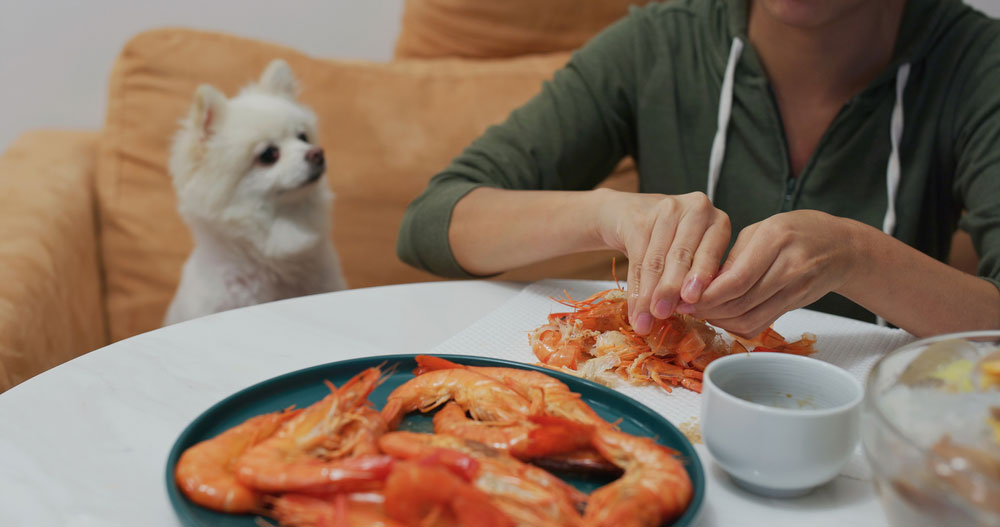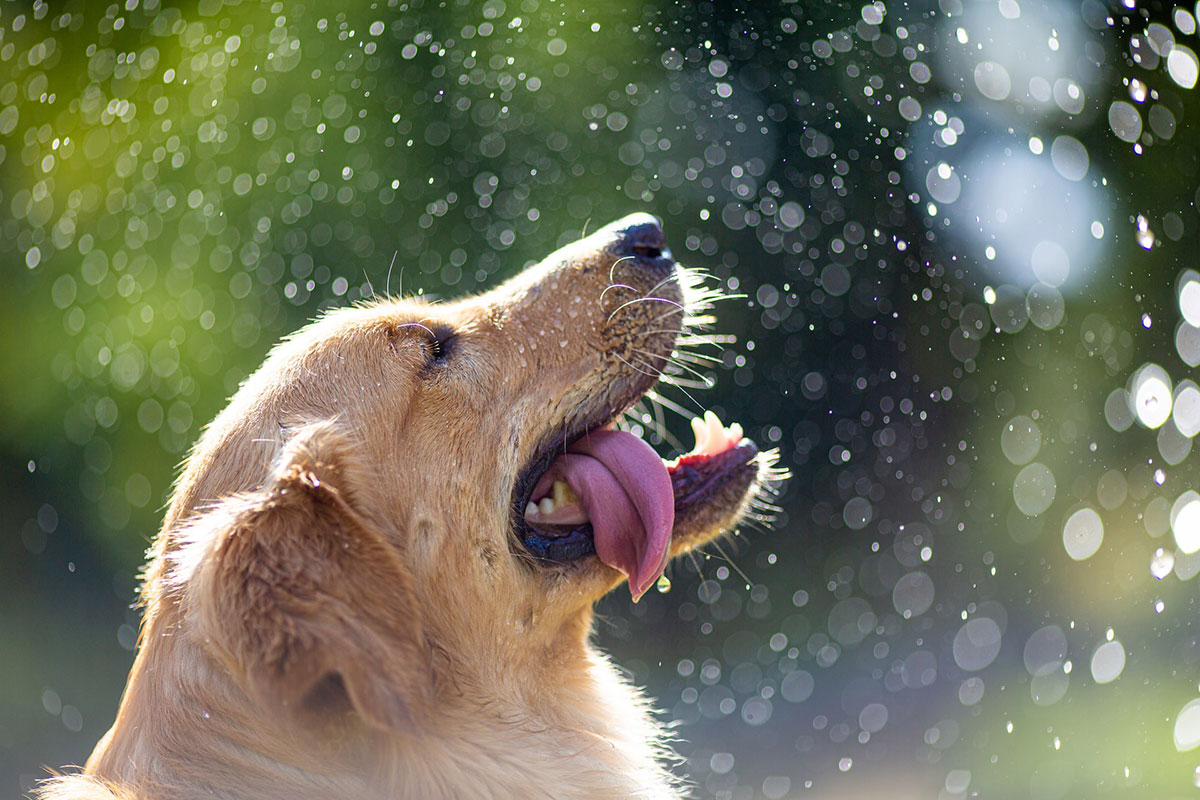Hey there, fellow pet lovers! If you are like me, you surely enjoy finding new and exciting snacks for our furry friends. Let’s chat about everyone’s favorite shelled delicacy: shrimp!
You may be wondering, can dogs eat shrimp? Great question! The answer is yes, dogs can safely eat shrimp in moderation. This delightful seafood is not only tasty but can also offer some health benefits. Now, don’t run off just yet! We are going to cover everything from portion sizes to potential risks for our pawed pals. So let’s dive in and learn how shrimp might just become a favorite treat for your dog!
As we dig deeper, we’ll uncover more about the nutritional aspects, benefits, risks, and even some awesome alternatives you can offer your furry companions. Let’s make sure our pups stay happy and healthy while enjoying some tasty treats!
Can Dogs Eat Shrimp?
Absolutely! Dogs can eat shrimp, and many pups enjoy it just as much as we do. Shrimp can be a fun and tasty addition to their diet. However, just like with any food that is not meant to be a primary meal, moderation is key. The shrimp you offer should be plain and cooked without any seasoning, butter, or oils. When feeding your dog shrimp, it is essential to ensure that it is fully cooked, as raw shrimp can carry harmful bacteria that could upset your dog’s stomach.
Another vital step is to remove the shell and head before serving it to your furry friend. Shrimp shells can be hard for dogs to digest and may even pose a choking hazard. This might be a good moment to put your chef hat on! You can steam or boil shrimp for your dogs, making it hassle-free and healthy. Always observe your dog after introducing a new food to their diet. Start small and monitor how they react.
Remember that some dogs may have allergies or sensitivities to certain foods, including seafood. If you notice any unusual reactions, such as itching, swelling, or digestive upset, it’s best to stop feeding them shrimp and consult your veterinarian. This way, we can keep our four-legged friends safe while allowing them to enjoy treats every now and then.
How Much Shrimp Can Dogs Eat?
When it comes to how much shrimp we should give our dogs, moderation is vital! The amount can vary depending on your dog’s size, age, and overall health. As a general rule of thumb, starting with just a few pieces is a good idea to assess their tolerance. For small dogs, one or two shrimp at a time is an excellent starting point. For bigger dogs, you can offer more, but always avoid excessive amounts.
It’s also essential to consider how often you are giving shrimp to your dog. We shouldn’t make it a daily treat; instead, think of it as an occasional reward or addition to their meal. Once a week can work perfectly, but again, it will depend on each dog’s dietary needs. The general idea is to make shrimp a special treat rather than a significant part of their diet.
Also, be cautious with pre-packaged or processed shrimp, as they can contain preservatives or seasonings that may not be safe for dogs. Stick to cooking your shrimp at home, keeping it fresh and wholesome.
If your dog is new to shrimp, it’s smart to slowly introduce it into their diet. Gradually increasing the amount lets their body adjust. If they tolerate it well after a short introduction, you can continue giving it as a fun treat. Always consult your veterinarian if you have concerns about the appropriate quantity for your dog, especially if they have any pre-existing health conditions.
The most important thing is to make sure our beloved pets are enjoying their tasty treats while remaining healthy and happy! So let’s serve them shrimp, but not too much!
Benefits of Shrimp to Dogs
Nutritional Value
Shrimp is packed with essential nutrients that can be beneficial for our furry companions. It is high in protein, which is vital for maintaining muscle and overall health. Dogs, being omnivores, need protein to fuel their energy levels, support body functions, and help with tissue growth. Including shrimp in their meals can give them a protein boost while keeping things interesting.
Low in Calories
For pet owners seeking low-calorie treat options, shrimp is a fantastic choice! It is relatively low in calories, which is beneficial for keeping our pups in shape. Maintaining a healthy weight for our dogs is crucial in preventing various health issues. If your dog tends to be a bit on the heavier side, shrimp can offer an excellent way to reward them without piling on the calories.
Omega-3 Fatty Acids
Another notable benefit of shrimp is the presence of omega-3 fatty acids, which are known for promoting healthy skin and a shiny coat. Many dog owners appreciate this aspect, especially for breeds prone to skin allergies. Adding shrimp to your dog’s diet can help keep their skin moisturized and their coat looking vibrant. A happy dog is a beautiful dog!
Supports Immune System
Shrimp is high in antioxidants like astaxanthin, which can help support a strong immune system for our beloved pets. Keeping our dogs’ immune systems functioning well helps them fend off illnesses and infections. So, snacking on shrimp might just be a little boost for their immune health!
Promotes Healthy Bones
Shrimp also contains essential minerals such as phosphorus and calcium, which are vital for strong and healthy bones. As dogs age, it becomes crucial to support their bone health. Feeding them shrimp occasionally can contribute to their mineral intake, helping to maintain a healthy skeletal structure.
In summary, shrimp brings along several benefits that can enhance our furry friends’ health. Just remember that everything should be given in moderation and always observe your dog when trying new treats!
Risks/Dangers of Feeding Shrimps to Dogs
Allergies and Sensitivities
Like humans, our dogs can also develop allergies or sensitivities to certain foods, including shrimp. Some dogs may experience signs of allergies such as itching, sneezing, or digestive upset after consuming shrimp. If we notice any of these symptoms, it’s crucial to consult with our veterinarian. Keeping our friends safe is always a top priority!
Choking Hazard
As we mentioned before, shrimp shells can pose a choking hazard, especially for smaller breeds. Always remove the shells before serving shrimp to your furry friend to prevent accidental choking. This way, we can enjoy feeding them this delightful treat without any worries.
High Sodium Content
Another risk to keep in mind is the sodium content in shrimp. Excessive salt can be detrimental to dogs, leading to dehydration or even more severe health issues. That’s why it’s crucial to avoid giving them shrimp that has been prepared with salt, butter, or seasonings. It’s best to stick with simple, plain shrimp.
Potential for Contaminants
Shrimp can carry contaminants or harmful bacteria if not prepared or handled correctly. For instance, raw shrimp can harbor parasites and bacteria that might upset your dog’s stomach. Always ensure it’s cooked properly and served fresh to our furry companions. This can help to avoid any potential health risks associated with foodborne illnesses.
Portion Control
Too much shrimp can lead to an upset stomach, constipation, or diarrhea. It’s essential to monitor the amount we give, sticking to small portions, especially when introducing it for the first time. If we want our dogs to keep enjoying this delicious treat, we need to be mindful of portion sizes. As responsible pet parents, we should focus on a balanced diet that includes a variety of safe foods.
Substitute of Shrimps for Dogs
Alternate Seafood Options
If you’re looking for alternatives to shrimp, consider other seafood options that are safe for dogs. Fish such as salmon, whitefish, or sardines can be great choices while offering similar health benefits. Remember to keep these options simple, cooking them without any seasoning!
Lean Meats
Another alternative could be lean meats like chicken or turkey. These options are also high in protein and can make great snacks for our dogs. Just like with shrimp, make sure to cook them properly and avoid seasoning.
Vegetable Treats
If you want to explore some plant-based options, there are plenty of safe vegetables for dogs. Carrots, green beans, and sweet potatoes can provide nutrition and satisfy their taste buds. You can cook, steam, or even serve them raw as fun treats. They might just love them!
Peanut Butter
Our furry companions often go wild for peanut butter! It can serve as a delightful alternative treat packed with protein and healthy fats. Always go for unsweetened, xylitol-free peanut butter to ensure it’s safe for our dogs. Slathering some on a dog-friendly toy might just keep them entertained for hours!
Store-bought Treats
If homemade options aren’t your thing, there are tons of store-bought dog treats that can be safe and healthy. Just keep an eye on the ingredient list and consult your veterinarian if you’re unsure about specific products. We want the best for our furry friends!
Frequently Asked Questions
Can dogs eat cooked shrimp?
Yes, dogs can safely eat cooked shrimp! Just remember to prepare it without seasoning and remove the shell.
Is shrimp a good source of protein for dogs?
Absolutely! Shrimp is a good source of protein and can be a nutritious treat for dogs when given in moderation.
Can dogs eat shrimp every day?
No, it’s best to make shrimp an occasional treat rather than a daily snack. Moderation is essential to maintain a balanced diet.
Are there any harmful additives in shrimp?
Yes, processed and pre-packaged shrimp may contain preservatives and harmful additives. Stick to fresh, simply prepared shrimp for your dog.
How should I introduce shrimp to my dog’s diet?
Start by giving them a small amount and monitor for any adverse reactions. If they tolerate it well, you can gradually increase how often you offer shrimp.
Final Thoughts
In conclusion, we can happily say that dogs can eat shrimp as a treat! With the right precautions and moderation, shrimp can become a delightful addition to your dog’s snacking routine. It’s all about keeping our furry friends safe and healthy while indulging them with the occasional special food. Always be on the lookout for any negative reactions after introducing new treats, and consult your veterinarian if you have any questions.
We hope this information has been helpful in making informed choices for your pet’s diet.





